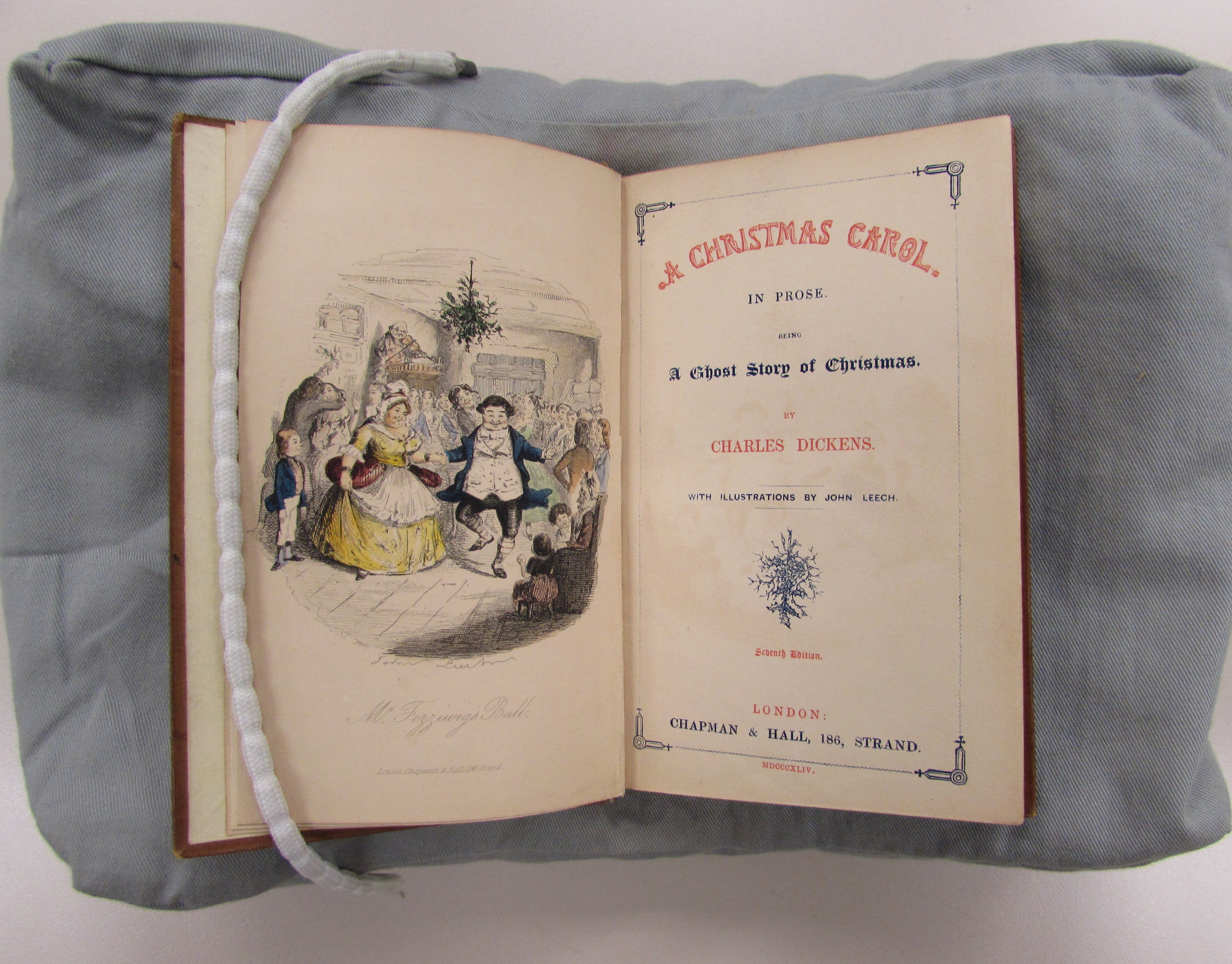 A selection of "A Christmas Carol" from DePaul's Charles Dickens collection. (Image courtesy of Special Collections and Archives)
A selection of "A Christmas Carol" from DePaul's Charles Dickens collection. (Image courtesy of Special Collections and Archives)
While the holidays this year will be a little different than previous years, one tradition that will remain the same is the popularity of Charles Dickens' “A Christmas Carol." The classic, originally titled “A Christmas Carol in Prose: Being a Ghost Story of Christmas," was penned to make money fast because Dickens was plagued by debt.Dickens wrote the story in just six weeks. Released on Dec. 19, 1843, by the London publishing house Chapman and Hall, it sold more than 6,000 copies in the first week, a sign Dickens successfully enchanted readers with his vision of Christmas.
Around the time “A Christmas Carol" was published, Christmas was beginning to change from a solemn, reflective holiday to a more joyous and festive event like the depictions of Christmas in the book. Dickens' portrayal of a celebration with family and good will towards all, especially to those less fortunate, resonated with its Victorian audience and the emerging traditions, culminating in Christmas becoming the cheerful celebratory occasion we know today.
Special Collections and Archives has the magic of “A Christmas Carol" to thank for its extensive Dickens collections. This tale was what first inspired Samuel Baldwin Bradford to assemble the collection later donated to DePaul's library in 1972. Bradford collected copies of “A Christmas Carol" to create an extra-illustrated version with examples of how different illustrators imagined the characters and scenes. He also went beyond collecting just “A Christmas Carol" and purchased many other works by and about Dickens, including his other Christmas related works, “The Chimes," “The Cricket on the Hearth," “Battle of Life," and “Haunted Man." You will even find short stories about Christmas in Dickens' periodical “Household Words."
Special Collections and Archives has continued to add to the collection, which now includes first editions, illustrated copies of Dickens' other novels and stories, biographical works about Dickens, illustrated prints and ephemera.
In 2018, the William George Shuster “A Christmas Carol" collection was donated to Special Collections and Archives, complementing the Dickens collection to add more popular and contemporary works, such as pop-up books, comic books, film adaptations and whimsical objects like character-inspired rubber ducks, neckties and postage stamps. Shuster collected books and objects related to Scrooge's transformation for decades, displaying them in his home each year for holiday visitors to enjoy. The range of “A Christmas Carol" items – their format, tone, and time period – document the story's Victorian birth to its pop culture references today.
While Special Collections and Archives cannot safely host in-person visits at this time to see these materials, there are plenty of ways to enjoy Dickens from the comfort of your home. If you don't have access to a physical copy, you will find many editions of “A Christmas Carol" on Google Books or Project Gutenberg. With your DePaul Campus Connection credentials, you also can access copies of the tale through the HathiTrust database.
Dickens recommended reading the story by candlelight, or perhaps by screen light, in a cold room—it is a ghost story after all. For more information about DePaul's Victorian rare book holdings, contact Nora Gabor. If you are interested in using our collections for an instruction session, contact Morgen MacIntosh Hodgetts.